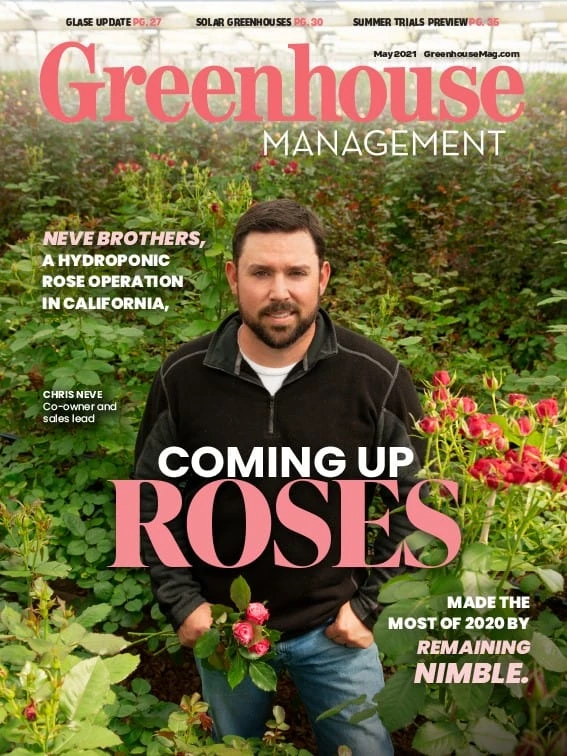

Greenhouse Management: Has Hoffman Nursery felt the impact of the plant supply issues coming out of the Texas winter storms?
David Hoffman: Yes. Some of our customers I know are sending material down. And that’s from North Carolina all the way up to New Jersey. I’ve talked to a few people that are sending material down, so I imagine that we will as time goes on. I don’t know if we’ve directly seen anything — honestly, a lot our material has been sold out — but there is, across the industry, a lot of truck loads going from all over down to Texas ... I don’t know if it really changed much of what we do. It just diverts plants to different areas, right? We might see effects down the road. We sell a lot to finished growers and if they switch their production plans based on that pull into Texas, that might affect us. But it’ll probably be more of a ripple effect for us.
GM: How do things like booming business, supply chain adjustments and other changes that have come up in the past year affect you in real time? And is it easy to pivot in real time?
DH: If the stock is out there, we can do it. The big inputs in there are stock and labor and I would say that stock, I’ve heard with seed that it’s a little easier to jump and grow fast with. But in some cases, we are looking at two years to grow plants. It’s not as easy to get young plants that way. Sometimes with tissue culture, they can have the ability to ramp up. But if those plants aren’t initiated, that can be difficult, too. Trying to pivot or ramp up specifically for certain items is not as easy as it might seem or sound ... If you don’t have the resources in labor or even soil or plastics, it’s a problem. A soil supplier told me that they were just having problems getting trucks to deliver material. It’s not even that they don’t have the material.
GM: What is the substitution process like at Hoffman?
DH: I would say that you won’t always have a sub for some of these orders that come in. I think it’s an important point. We may have a selection of species, but they might not be functionally fit or have the right look or whatever the customer is looking for to satisfy their needs. Making sure that they have the right plants so they are successful, so they don’t have to go redo their job or can just provide plants to their customers is what’s most important. And that all comes back to communication both internally or with the customers to make sure they know what’s going on.

Explore the May 2021 Issue
Check out more from this issue and find your next story to read.
Latest from Greenhouse Management
- CEA Alliance celebrates bipartisan introduction of Supporting Innovation in Agriculture Act
- Dümmen Orange North America celebrating 25th anniversary in 2025
- Illinois Landscape Contractors Association changes name to Landscape Illinois
- 2025 Proven Winners Horticulture Scholarship applications now open
- ICL’s Gemini Granular herbicide now registered for use in California
- Eurazeo Planetary Boundaries Fund acquires Bioline AgroSciences
- Spring Meadow Nursery's Freedom Shelley finds joy in plants
- Leading Women of Horticulture: Dana Massey, Plantworks Nursery






